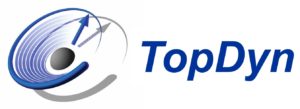

Seminar über die Physik der kondensierten Materie (SFB/TRR173 Spin+X und SFB/TR288 Kolloquium, TopDyn-Seminar)
Oct. 4, 2023 at
1 p.m.
in
tba.
Univ-Prof. Dr. Jure Demsar
Univ.-Prof. Dr. Hans-Joachim Elmers
Univ.-Prof. Dr. Mathias Kläui
Univ.-Prof. Dr. Thomas Palberg
Calculating spatially resolved (charge, spin and orbital) currents and what we can do with them
Paul J. Kelly (University of Twente)
Phenomenological theories in spintronics are usually based upon semiclassical formulations of transport like the Boltzmann or diffusion equations that cannot easily accommodate the fundamentally quantum character of energy bands and Fermi surfaces; this is more readily done using scattering theory. The challenge for first-principles scattering theory is to describe the diffusive regime in which most experiments are performed. I sketch the developments that have allowed us to realize this goal culminating in the extraction of charge and spin currents [1] from large scale relativistic scattering calculations [2] that include temperature-induced lattice and spin disorder [3].
I illustrate our approach with a study of the temperature dependence of the spin-flip diffusion length and spin Hall angle for the bulk 5d transition metals [4]. It allowed us to evaluate the transport parameters required to describe a spin current through interfaces between two non-magnetic metals or between a non-magnetic and a ferromagnetic metal and focus on the temperature dependence of the spin memory loss that describes interface spin flipping [5]. When we use it to study the spin Hall effect in a thin Pt film, we find that we cannot recover the bulk spin-flip diffusion length without taking surface effects into account. The same approach allows us to examine the shunting of a charge current passed through a bilayer parallel to the interface [1], the Fuchs-Sondheimer suppression of charge currents by surfaces and interfaces [1] or the efficiency with which a spin or orbital Hall current is injected laterally from e.g Pt into Au or from Co or Py into Cu.
Work carried out in collaboration with Rohit Nair, Max Rang, K. Gupta, R.J.H. Wesselink, R.X. Liu, Z. Yuan
and E. Barati
[1] R.J.H. Wesselink et al., PRB 99, 144409 (2019); R.S. Nair and P.J. Kelly, PRB 103, 195406 (2021).
[2] A. A. Starikov et al., PRB 97, 214415 (2018).
[3] Y. Liu et al., PRB 91, 220405 (2015).
[4] R.S. Nair et al. PRL 126, 196601 (2021).
[5] K. Gupta et al., PRL 124, 087702 (2020); PRB 104, 205426 (2021); PRB 106, 104401 (2022); PRB 106, 115425 (2022).